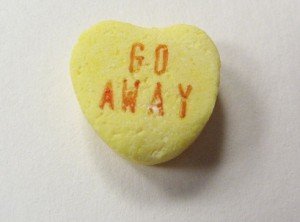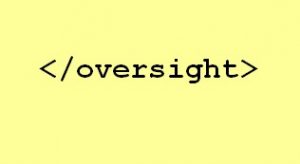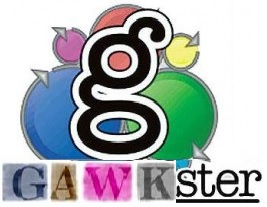One of the big questions preceding the Supreme Court’s decision in the Aereo case earlier this week was whether a holding against Aereo would put cloud services into such a legally precarious position that the innovation and investment climate would chill. While the decision clearly makes Aereo’s use of its technology illegal, one should not be too quick to foretell a drastic impact on all hosted services. Here are some reasons why.
What cloud?
Let’s be clear about what we mean by “the cloud” in this context. Aereo’s technical model – which the court found to infringe copyright – captured over-the-air television content using one tiny antenna per customer, transcoded that content into one copy per customer, which Aereo stored and then streamed on-demand to the customer. The court found that model bore an “overwhelming likeness to the cable companies targeted by the [1976 Copyright Act]” to an extent that Aereo was “for all practical purposes a traditional cable system.” Aereo’s technological attempts such as the one-copy-per-customer method that it used to distinguish itself from traditional cable services were immaterial to the court. Aereo looked like a cable company, so the court treated it as one, with all the copyright consequences that go along with that status.
Aereo was a cloud service inasmuch as it stored the TV content and served it to its users when those users initiated the performances. It was the cable-like functions that got it into trouble, not necessarily the cloud-provider functions. That arguably leaves the rest of what we consider cloud services – online collaboration tools, centralized communications systems, most hosted applications, and the like – outside the scope of the court’s decision. Most software-as-a-service models, whether to the consumer or at the enterprise level, are unlike cable systems and thus likely stand clear of the sweep of the Aereo sickle.
The technology could live on.
One must also be sure to recognize that the court’s decision did not kill the technology altogether, but instead killed the use of the technology in the hands of one who does not have ownership or license to the content being delivered. Since the court found that Aereo’s service was “substantially similar” to cable systems, Aereo, its successors, or other players in the space could look to monetize the technology while paying the compulsory licenses that Section 111 of the Copyright Act spells out in dizzying complexity. Or the broadcasters and other content stakeholders could acquire Aereo-like technology and use it to supplement the other means of content delivery currently at play. In either scenario, the needs for investment and innovation in providing infrastructure (as well as the need for clarity on network neutrality) remain firmly intact.
The real likely effect.
This is not to say that Aereo will have no effect on development of technology in areas outside the particular facts of the case. The court’s decision expands the class of online intermediaries who may be liable for direct copyright infringement. In that respect, the case differs from other important technology-provider copyright cases like the Betamax case, Grokster and the Cablevision case. In those cases, the main question before the courts was whether the providers were secondarily liable for the infringement committed by their users. In Aereo, however, the question was whether Aereo itself was liable for infringement committed by providing the technology to others. The Supreme Court held that Aereo was a direct infringer because its functionality so closely resembled a cable company.
So the court has given copyright plaintiffs some new, additional angles to consider when pursuing infringement litigation against technology providers. Does the technology so resemble the technical model of a cable delivery system, particularly from the perspective of the end user, such that it de facto publicly performs the works delivered by the system? If so, then the Aereo test forbids it. Moreover, the case fuzzies the relatively bright line that began to be drawn almost 20 years ago with Religious Technology Center v. Netcom, requiring that for an internet intermediary to be liable for direct infringement, it need undertake some volitional conduct in furtherance of the infringement. That fuzziness will no doubt embolden some plaintiffs who otherwise would not have seen the potential for a cause of action against future defendant-innovators.
In reality, few platforms are likely to actually get “Aereoed” in litigation. The ones at greatest risk will be those that facilitate access to streaming content provided by others. But the fact that ultimate liability may not lie against a provider will likely do little to stop aggressive copyright plaintiffs from trying out the theory against all forms of remote storage providers. That’s the problem Justice Scalia identified in his dissent when he said the decision “will sow confusion for years to come.” Let’s hope that’s mostly an overstatement.
Evan Brown is an attorney in Chicago advising clients on matters dealing with technology, the internet and new media.

 Plaintiff wrote an XML parser and made it available as open source software under the
Plaintiff wrote an XML parser and made it available as open source software under the  The Copyright Act is a federal law, and is drafted to “preempt” state laws that purport to give individuals rights that are “equivalent” to rights granted under the Copyright Act. The purpose of this preemption is to displace the effect of any equivalent state law, so that the federal framework gets to deal exclusively with copyright.
The Copyright Act is a federal law, and is drafted to “preempt” state laws that purport to give individuals rights that are “equivalent” to rights granted under the Copyright Act. The purpose of this preemption is to displace the effect of any equivalent state law, so that the federal framework gets to deal exclusively with copyright.  The owners of an LLC successfully published a magazine for several years, but the business declined and the company eventually filed bankruptcy. While the bankruptcy proceedings were still underway, one of the owners started up a new magazine publishing the same subject matter. He essentially took over the old company’s website to promote the new magazine. And he posted to the LLC’s Facebook page on three separate occasions, “reminding” those who liked the page to instead like his new company’s Facebook page.
The owners of an LLC successfully published a magazine for several years, but the business declined and the company eventually filed bankruptcy. While the bankruptcy proceedings were still underway, one of the owners started up a new magazine publishing the same subject matter. He essentially took over the old company’s website to promote the new magazine. And he posted to the LLC’s Facebook page on three separate occasions, “reminding” those who liked the page to instead like his new company’s Facebook page.  Does an online service provider forfeit the safe harbor protections of the Digital Millennium Copyright Act if, when terminating the account of a repeat infringer, it does not delete all content the repeat infringer uploaded — infringing and noninfringing alike? A recent decision involving the antique internet technology Usenet sheds light on an answer.
Does an online service provider forfeit the safe harbor protections of the Digital Millennium Copyright Act if, when terminating the account of a repeat infringer, it does not delete all content the repeat infringer uploaded — infringing and noninfringing alike? A recent decision involving the antique internet technology Usenet sheds light on an answer. 


 The Hollywood Reporter
The Hollywood Reporter